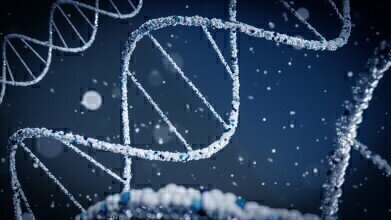News
Can We Replicate a Person Using DNA?
Jul 21 2015
For decades scientists have been infatuated with the idea of using DNA to replicate human beings. The concept first came to light in the 1950s when scientists successfully cloned a frog. Since then a myriad of other animals have been created, including mice, cats, pigs, cows and of course, Dolly the sheep. Yet when it comes to human beings, DNA cloning remains unconquered. Why? It’s an incredibly controversial topic, with a plethora of ethical and scientific barriers. So is it possible to replicate a person using DNA? Read on for our take on the matter.
What is DNA replication?
DNA replication refers to the process of creating two identical DNA strands from one original molecule. The reproduction of molecules is a biological process that occurs in every living organism, from humans to animals. DNA replication is the driving force behind the phenomenon of biological inheritance. In the replication process the original dual DNA strands serve as templates for the secondary strand. This is called semiconservative replication. To ensure genetic perfection scientists utilise cellular proofreading and error checking technology.
If we can clone animals, why not humans?
Many people are under the impression that if scientists can clone animals they can also clone humans. This is simply not accurate. Every organism is different and the same techniques used to clone a sheep can’t necessarily be used to clone a human or another species. For example, while removing the nucleus of a mice egg cell makes it possible to harvest the proteins that foster cell division, the same technique can’t be used on primates. Researchers suspect that this is why all monkey clone projects have failed.
The ethical barriers
One of the biggest obstacles standing in the way of human cloning advancements is ethical issues. DNA replication experiments have extremely high death and abnormality rates, with Dr. Robert Lanza, chief scientific officer at biotech company Advanced Cell Technology explaining, "It's like sending your baby up in a rocket knowing there's a 50-50 chance it's going to blow up. It's grossly unethical.”
Exciting new developments
While it may not be possible to replicate a human being using DNA, there’s no reason why it couldn’t become a reality in the future. There are constant cutting edge developments on the horizon, some of which are discussed in ‘Conformations of DNA Hairpin Loops under Crowded Conditions.’ Using UV Vis absorption spectroscopy scientists have managed to successfully monitor the conformation of various ssDNA hairpin loops in crowded fluids that mimic intracellular conditions.
Digital Edition
Lab Asia Dec 2025
December 2025
Chromatography Articles- Cutting-edge sample preparation tools help laboratories to stay ahead of the curveMass Spectrometry & Spectroscopy Articles- Unlocking the complexity of metabolomics: Pushi...
View all digital editions
Events
Jan 21 2026 Tokyo, Japan
Jan 28 2026 Tokyo, Japan
Jan 29 2026 New Delhi, India
Feb 07 2026 Boston, MA, USA
Asia Pharma Expo/Asia Lab Expo
Feb 12 2026 Dhaka, Bangladesh



















